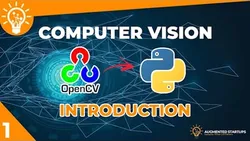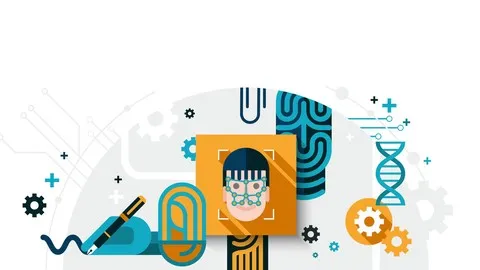
OpenCV Python Tutorials 2022 
This tutorial series provides an introduction to OpenCV Python, a library used for computer vision applications. It covers topics such as downloading and installing OpenCV, reading and displaying images, and saving images. It also provides an overview of the library's features and functions. This tutorial series is a great resource for anyone looking to get started with OpenCV Python. ▼
ADVERTISEMENT
Course Feature
![]() Cost:
Cost:
Free
![]() Provider:
Provider:
Youtube
![]() Certificate:
Certificate:
Paid Certification
![]() Language:
Language:
English
![]() Start Date:
Start Date:
On-Demand
Course Overview
❗The content presented here is sourced directly from Youtube platform. For comprehensive course details, including enrollment information, simply click on the 'Go to class' link on our website.
Updated in [February 21st, 2023]
OpenCV Python Tutorials 2022 is an online course that teaches learners how to use OpenCV, a powerful library for computer vision. Learners can learn how to download and install OpenCV, read and display images, save images, access image properties, change color space, resize images, display text, draw lines, circles, rectangles, and ellipses, display images in multiple modes, and play webcam video.
In terms of summary learning content, learners can learn the basics of OpenCV, such as downloading and installing OpenCV, reading and displaying images, saving images, accessing image properties, and changing color space. They can also learn more advanced topics, such as resizing images, displaying text, drawing lines, circles, rectangles, and ellipses, displaying images in multiple modes, and playing webcam video.
In terms of use of learning content, learners can use OpenCV to create computer vision applications, such as facial recognition, object detection, and image segmentation. They can also use OpenCV to create applications for image processing, such as image enhancement, image restoration, and image recognition.
In terms of related development direction, learners can explore other libraries and frameworks related to computer vision, such as TensorFlow, Keras, and PyTorch. They can also explore other topics related to computer vision, such as machine learning, deep learning, and artificial intelligence.
[Applications]
After completing the OpenCV Python Tutorials 2022 course, participants can apply their knowledge to create applications such as image processing, object detection, facial recognition, and video streaming. They can also use OpenCV to develop applications for computer vision, robotics, and augmented reality. Additionally, they can use OpenCV to create applications for image and video editing, and for creating interactive graphical user interfaces.
[Career Paths]
1. Computer Vision Engineer: Computer vision engineers use OpenCV and other computer vision libraries to develop algorithms and applications that can interpret and understand digital images and videos. They are responsible for developing and deploying computer vision systems for a variety of applications, such as facial recognition, object detection, and autonomous navigation. The demand for computer vision engineers is increasing as the technology becomes more widely used in various industries.
2. Image Processing Engineer: Image processing engineers use OpenCV and other image processing libraries to develop algorithms and applications that can process digital images and videos. They are responsible for developing and deploying image processing systems for a variety of applications, such as medical imaging, facial recognition, and object detection. The demand for image processing engineers is increasing as the technology becomes more widely used in various industries.
3. Machine Learning Engineer: Machine learning engineers use OpenCV and other machine learning libraries to develop algorithms and applications that can learn from data. They are responsible for developing and deploying machine learning systems for a variety of applications, such as facial recognition, object detection, and autonomous navigation. The demand for machine learning engineers is increasing as the technology becomes more widely used in various industries.
4. Robotics Engineer: Robotics engineers use OpenCV and other robotics libraries to develop algorithms and applications that can control robots. They are responsible for developing and deploying robotics systems for a variety of applications, such as autonomous navigation, object manipulation, and medical robotics. The demand for robotics engineers is increasing as the technology becomes more widely used in various industries.
Course Provider

Provider Youtube's Stats at AZClass
Discussion and Reviews
0.0 (Based on 0 reviews)
Explore Similar Online Courses

Essential Filmmaking Tool: Apps for Pre-production and Production

Facebook Ads Genius: How to Create Super Optimized Facebook Video Ads!

Python for Informatics: Exploring Information

Social Network Analysis

Introduction to Systematic Review and Meta-Analysis

The Analytics Edge

DCO042 - Python For Informatics

Causal Diagrams: Draw Your Assumptions Before Your Conclusions

Whole genome sequencing of bacterial genomes - tools and applications

Introduction to Computer Vision

Learn Computer Vision with OpenCV Library using Python


Start your review of OpenCV Python Tutorials 2022